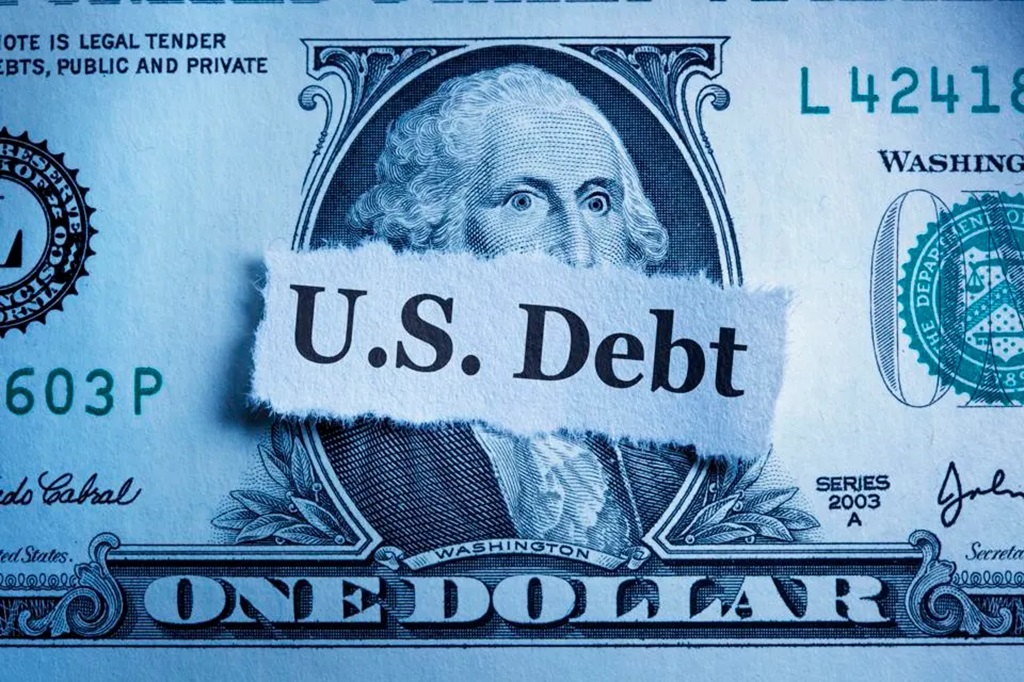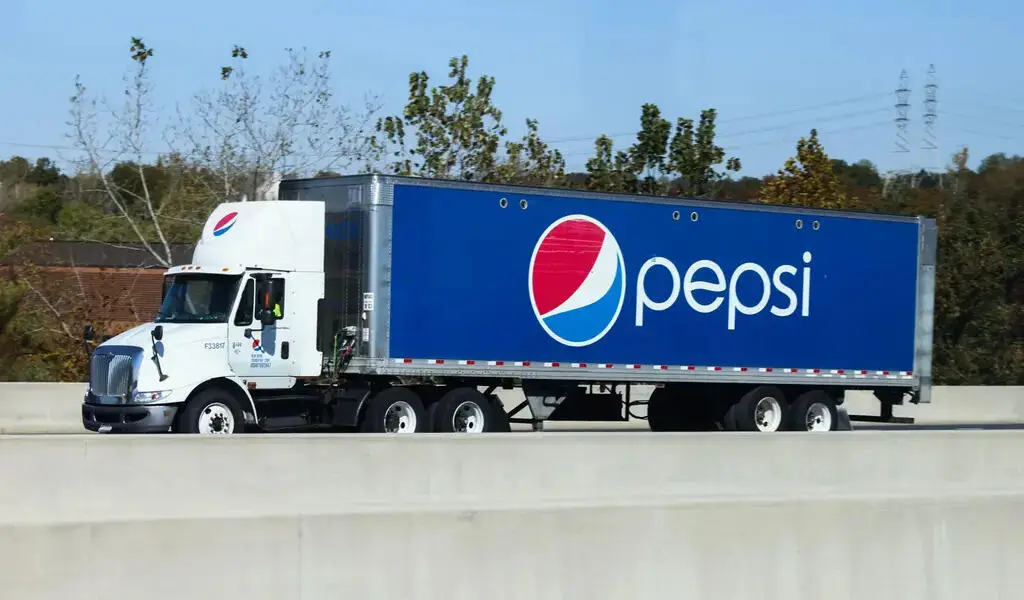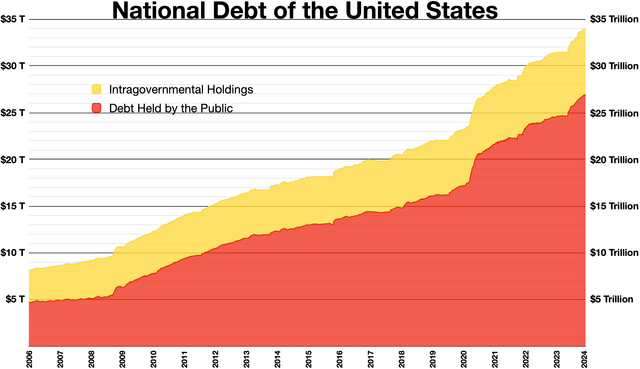Business
Disaster Looms as U.S. Federal Debt Nears 100% of GDP

The United States and the world economy is facing disastrous consequences as the U.S. federal debt held by the public (which excludes money the government owes itself) is nearing 100 per cent of gross domestic product — and continuously rising as spending outstrips taxes.
“The deficit increases significantly in relation to gross domestic product over the next 30 years, reaching 8.5 per cent of GDP in 2054,” the Congressional Budget Office (CBO) predicts in “The Long-Term Budget Outlook: 2024 to 2054.”
“Debt held by the public, boosted by the large deficits, reaches its highest level ever in 2029 (measured as a percentage of GDP) and then continues to grow, reaching 166 per cent of GDP in 2054 and remaining on track to increase thereafter. That mounting debt would slow economic growth, push up interest payments to foreign holders of U.S. federal debt and pose significant risks to the fiscal and economic outlook.”
That’s grim stuff, made worse by legal requirements that the CBO base its analyses on a set of unrealistic assumptions. It must, for example, take at face value assurances that Congress will restrain spending and that taxes will come in higher than they ever have. Occasionally, though, the CBO stretches its remit to consider economic predictions that are more realistic.

U.S Federal Debt to Surpass GDP
Last July, it published a collection of alternative scenarios, acknowledging that in its official forecast, “discretionary spending is smaller and revenues are larger, on average, than they have been as a share of GDP over the past 30 years.” Those assumptions result in rosier predictions than the actual numbers justify. The alternative scenarios base spending and revenue projections on “average values they had over the past 30 years,” which is to say, reality.
According to the CBO, if the federal government continues to spend the way it has for the past three decades, and to collect taxes the way it has over the same time period, “debt held by the public would exceed 250 per cent of GDP by the end of the projection period.”
Given that the official forecast sees “significant risks to the fiscal and economic outlook” if debt hits 166 per cent of GDP, we can probably assume debt in excess of 250 per cent of GDP would have much worse consequences for Americans and the world beyond.
But the CBO’s economists hesitate to venture a guess as to how awful things might become should debt continue to soar, noting that, “Because of the significant uncertainty about the effects that such high levels of debt could have on the economy, CBO only reports specific economic or budgetary outcomes when debt is below that threshold.”
U.S. Government spending exceeding revenue
None of the alternative scenarios contemplate balanced budgets, probably because there’s no reason to waste energy on pure fantasy. Instead, they just contemplate fiscal irresponsibility over different time frames, with spending exceeding revenue. In that, the CBO’s expectations echo those of the University of Pennsylvania’s Penn Wharton Budget Model (PWBM).
“Under current policy, the United States has about 20 years for corrective action after which no amount of future tax increases or spending cuts could avoid the government defaulting on its debt whether explicitly or implicitly (i.e., debt monetization producing significant inflation),” PWBM, which is unburdened by unrealistic legally mandated assumptions, warned in October 2023.
“Unlike technical defaults where payments are merely delayed, this default would be much larger and would reverberate across the U.S. and world economies.” When PWBM conducted its analysis, debt held by the public was $26.3 trillion; it has since risen a trillion.
“We estimate that the U.S. debt held by the public cannot exceed about 200 per cent of GDP even under today’s generally favourable market conditions,” cautioned PWBM economists Jagadeesh Gokhale and Kent Smetters. “This 200 per cent value is computed as an outer bound using various favourable assumptions: a more plausible value is closer to 175 per cent.”
Separately, PWBM considered three approaches for fixing America’s fiscal mess: increasing taxes on high incomes, Social Security and Medicare reforms that reduce payouts and increase taxes, and a mix of tax increases and spending cuts. Tax hikes alone would still “allow the debt-to-GDP ratio to grow from 100 per cent today to 150 per cent in 2050,” they grant. That means some serious reductions in federal expenditures are required to get debt under control.
That’s especially important given the CBO’s concession in its alternative scenarios that revenues averaged 17.2 per cent of GDP for 30 years no matter who held office, and the Federal Reserve Bank of St. Louis’s records since 1929 of revenues rarely exceeding 19 per cent. Government officials dream of taxing us harder, but history says they have far more control over spending.
If Congress and the White House don’t exercise that control over the budget, deficits and resulting debt really will test just how much ruin there is in the United States.
Source: National Post

Business
PepsiCo Reduces Revenue Projections As North American Snacks And Key International Markets Underperform.

(VOR News) – In the third quarter of this year, Pepsi’s net income was $2.93 billion, which is equivalent to $2.13 per share. This was attributed to the company.
This is in stark contrast to net income of $3.09 billion, which is equivalent to $2.24 per share, during the same period in the previous year. The company’s earnings per share were $2.31 when expenses were excluded.
Net sales decreased by 0.6%, totaling $23.32 billion. Organic sales increased by 1.3% during the quarter when the effects of acquisitions, divestitures, and currency changes are excluded.
Pepsi’s beverage sales fell this quarter.
The most recent report indicates that the beverage and food sectors of the organization experienced a 2% decline in volume. Consumers of all income levels are demonstrating a change in their purchasing habits, as indicated by CEOs’ statements from the previous quarter.
Pepsi’s entire volume was adversely affected by the lackluster demand they encountered in North America. An increasing number of Americans are becoming more frugal, reducing the number of snacks they ingest, and reducing the number of times they purchase at convenience stores.
Furthermore, Laguarta observed that the increase in sales was partially attributed to the election that occurred in Mexico during the month of June.
The most significant decrease in volume was experienced by Quaker Foods North America, which was 13%. In December, the company announced its initial recall in response to a potential salmonella infection.
Due to the probability of an illness, the recall was extended in January. Pepsi officially closed a plant that was implicated in the recalls in June, despite the fact that manufacturing had already been halted.
Jamie Caulfield, the Chief Financial Officer of Pepsi and Laguarta, has indicated that the recalls are beginning to have a lessening effect.
Frito-Lay experienced a 1.5% decline in volume in North America. The company has been striving to improve the value it offers to consumers and the accessibility of its snack line, which includes SunChips, Cheetos, and Stacy’s pita chips, in the retail establishments where it is sold.
Despite the fact that the category as a whole has slowed down in comparison to the results of previous years, the level of activity within the division is progressively increasing.
Pepsi executives issued a statement in which they stated that “Salty and savory snacks have underperformed year-to-date after outperforming packaged food categories in previous years.”
Pepsi will spend more on Doritos and Tostitos in the fall and winter before football season.
The company is currently promoting incentive packets for Tostitos and Ruffles, which contain twenty percent more chips than the standard package.
Pepsi is expanding its product line in order to more effectively target individuals who are health-conscious. The business announced its intention to acquire Siete Foods for a total of $1.2 billion approximately one week ago. The restaurant serves Mexican-American cuisine, which is typically modified to meet the dietary needs of a diverse clientele.
The beverage segment of Pepsi in North America experienced a three percent decrease in volume. Despite the fact that the demand for energy drinks, such as Pepsi’s Rockstar, has decreased as a result of consumers visiting convenience stores, the sales of well-known brands such as Gatorade and Pepsi have seen an increase throughout the quarter.
Laguarta expressed his opinion to the analysts during the company’s conference call, asserting, “I am of the opinion that it is a component of the economic cycle that we are currently experiencing, and that it will reverse itself in the future, once consumers feel better.”
Additionally, it has been noted that the food and beverage markets of South Asia, the Middle East, Latin America, and Africa have experienced a decline in sales volume. The company cut its forecast for organic revenue for the entire year on Tuesday due to the business’s second consecutive quarter of lower-than-anticipated sales.
The company’s performance during the quarter was adversely affected by the Quaker Foods North America recalls, the decrease in demand in the United States, and the interruptions that occurred in specific international markets, as per the statements made by Chief Executive Officer Ramon Laguarta.
Pepsi has revised its forecast for organic sales in 2024, shifting from a 4% growth rate to a low single-digit growth rate. The company reiterated its expectation that the core constant currency profitability per share will increase by a minimum of 8% in comparison to the previous year.
The company’s shares declined by less than one percent during premarket trading. The following discrepancies between the company’s report and the projections of Wall Street were identified by LSEG in a survey of analysts:
SOURCE: CNBC
SEE ALSO:
Old National Bank And Infosys Broaden Their Strategic Partnership.
Business
Old National Bank And Infosys Broaden Their Strategic Partnership.

(VOR News) – Old National Bank, a commercial bank with its headquarters in the Midwest, and Infosys, a firm that specializes in information technology, have recently entered into a strategic expansion of their link, which has been in place for the past four years.
This expansion is more likely to take place sooner rather than later, with the likelihood being higher.
For the purpose of making it possible for Old National Bank to make use of the services, solutions, and platforms that are offered by Infosys, the objective of this expansion is to make it possible for the bank to transform its operations and processes through the application of automation and GenAI, as well as to change significant business areas.
This lets the bank leverage Infosys’ services, solutions, and platforms.
Old National Bank Chairman and CEO Jim Ryan said, “At Old National, we are committed to creating exceptional experiences for both our customers and our fellow employees.”
This statement is applicable to Old National Bank. Infosys is carefully managing the business process innovations that it is putting us through, putting a strong emphasis on efficiency and value growth throughout the process to ensure that it is carried out efficiently.
This is a routine occurrence throughout the entire operation. Because of Infosys’ dedication to our development and success, we are incredibly appreciative of the assistance they have provided.
Old National has been receiving assistance from Infosys in the process of updating its digital environment since the year 2020, according to the aforementioned company.
Ever since that time, the company has been providing assistance. The provision of this assistance has been accomplished through the utilization of a model that is not only powerful but also capable of functioning on its own power.
Infosys currently ranks Old National thirty-first out of the top thirty US banks.
This ranking is based on the fact that Old National is the nation’s largest banking corporation.
It is estimated that the total value of the company’s assets is approximately fifty-three billion dollars, while the assets that are currently being managed by the organization are valued at thirty billion dollars.
Dennis Gada, the Executive Vice President and Global Head of Banking and Financial Services, stated that “Old National Bank and Infosys possess a robust cultural and strategic alignment in the development, management, and enhancement of enterprise-scale solutions to transform the bank’s operations and facilitate growth.”
This remark referenced the exceptional cultural and strategic synergy between the two organizations. Dennis Gada is the one who asserted this claim. This was articulated explicitly concerning the exceptional cultural congruence and strategy alignment of the two organizations.
We are pleased to announce that the implementation of Infosys Topaz will substantially expedite the transformation of Old National Bank’s business processes and customer service protocols. We are exceedingly enthusiastic about this matter. We are quite thrilled about this specific component of the scenario.
Medium-sized banks operating regionally will continue to benefit from our substantial expertise in the sector, technology, and operations. This specific market segment of Infosys will persist in benefiting from our extensive experience. This phenomenon will enable this market sector to sustain substantial growth and efficiency benefits.
SOURCE: THBL
SEE ALSO:
American Water, The Largest Water Utility In US, Is Targeted By A Cyberattack
States Sue TikTok, Claiming Its Platform Is Addictive And Harms The Mental Health Of Children
Qantas Airways Apologizes After R-Rated Film Reportedly Airs On Every Screen During Flight
Business
American Water, The Largest Water Utility In US, Is Targeted By A Cyberattack

The largest regulated water and wastewater utility company in the United States stated Monday that it had been the target of a cyberattack, forcing the company to halt invoicing to consumers.
American Water, The Largest Water Utility In US, Is Targeted By A Cyberattack
American Water, based in New Jersey and serving over 14 million people in 14 states and 18 military facilities, said it learned of the unauthorized activity on Thursday and quickly took precautions, including shutting down certain systems. The business does not believe the attack had an impact on its facilities or operations and said employees were working “around the clock” to determine the origin and scale of the attack.

According to their website, American Water operates over 500 water and wastewater systems in around 1,700 communities across California, Georgia, Hawaii, Illinois, Indiana, Iowa, Kentucky, Maryland, Missouri, New Jersey, Pennsylvania, Tennessee, Virginia, and West Virginia.
SOURCE | AP
-

 News3 years ago
News3 years agoLet’s Know About Ultra High Net Worth Individual
-
Entertainment2 years ago
Mabelle Prior: The Voice of Hope, Resilience, and Diversity Inspiring Generations
-

 Health3 years ago
Health3 years agoHow Much Ivermectin Should You Take?
-

 Tech2 years ago
Tech2 years agoTop Forex Brokers of 2023: Reviews and Analysis for Successful Trading
-

 Lifestyles3 years ago
Lifestyles3 years agoAries Soulmate Signs
-

 Movies2 years ago
Movies2 years agoWhat Should I Do If Disney Plus Keeps Logging Me Out of TV?
-

 Health3 years ago
Health3 years agoCan I Buy Ivermectin Without A Prescription in the USA?
-

 Learning3 years ago
Learning3 years agoVirtual Numbers: What Are They For?


